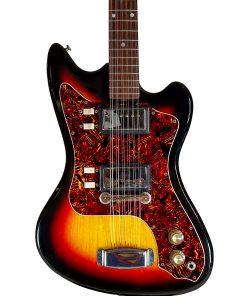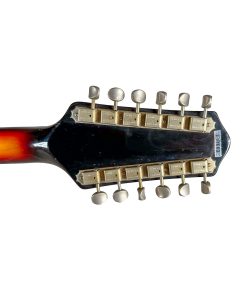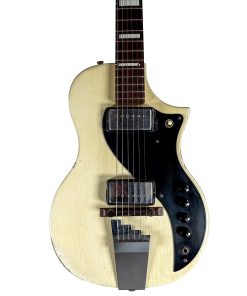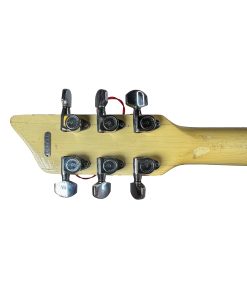OXI Instruments One – Modular-Grade MIDI CV Sequencer – MINT Condition
$515.00
1 in stock
OXI Instruments One – Modular-Grade Sequencing in a Portable Brain
The OXI One is a next-generation multi-track sequencer and performance controller designed for producers, modular users, and hardware synth enthusiasts who want a powerful, portable brain for their setup. With four independent sequencers, a multi-mode operating system, deep connectivity, and a sleek hardware interface, the OXI One goes well beyond traditional step sequencing—it’s an instrument in itself.
It’s built for those who think in phrases, perform with modular gear, or want Euclidean, polyrhythmic, generative, and tonal sequencing options all in one unit.
Key Features
-
4 Independent Sequencers: Each track can run its own length, mode, scale, time division, and output, allowing complex polymetric compositions or simple, traditional linear sequences.
-
Multiple Sequencing Modes:
-
Mono/Polyphonic Step Sequencing
-
Chord Mode with intelligent voicing
-
Arpeggiator Mode
-
Multitrack Piano Roll
-
Stochastic & Generative Sequencing
-
Euclidean Rhythms
-
Live Recording & Looping
-
-
32 Touch-Sensitive Keys: Full note entry and live performance possible from the onboard interface without needing an external MIDI keyboard.
-
CV/Gate, MIDI, and Bluetooth: 8 CV outputs, 8 Gate outs, MIDI I/O, and Bluetooth LE MIDI allow control of Eurorack, hardware synths, iOS apps, and DAWs.
-
Scenes, Patterns, and Perform Modes: Advanced song and performance tools with scene recall, macro control, and real-time switching.
-
Expandable via the OXI Pipe (optional breakout module) for even more Eurorack-friendly use.
Pros
-
Exceptionally deep sequencer that doesn’t compromise on speed or flexibility.
-
Great for compositional experimentation, including generative, Euclidean, and polyrhythmic ideas.
-
The Chord Mode makes it easy to write harmonic progressions—even with modular gear that normally lacks polyphony.
-
Standalone performance is totally viable—built-in battery, compact form, and strong internal engine.
-
Firmware is actively developed, with frequent updates that add features.
Cons
-
Not beginner-friendly—the interface is intuitive once learned, but the depth can be overwhelming at first.
-
Touch keys are versatile but not a replacement for velocity-sensitive pads or a keyboard for expressive input.
-
Some menu diving is needed to access the more advanced features, especially when switching between modes.
-
For users purely in the box (DAW-centric), it might overlap with existing software tools.
| Weight | 64 oz |
|---|---|
| Dimensions | 16 × 6 × 2 in |
Related products
Guitars, Basses, Keyboards, & other Instruments
Knobula Poly Cinematic – 8‑Voice, 56‑Oscillator Polyphony in 12 HP Eurorack in MINT Condition
Guitars, Basses, Keyboards, & other Instruments
Ritual Electronics – Diviser / Modular Eurorack / Flexible Clock Divider = MINT Condition
Guitars, Basses, Keyboards, & other Instruments
Guitars, Basses, Keyboards, & other Instruments
RYK Modular M175 – Triple Vactrol Resonator System 100M 175 Modern Eurorack
Guitars, Basses, Keyboards, & other Instruments
Ry Cooder 1963 Supro Lexington 12-String Electric Guitar = $4500 ALL IN
Guitars, Basses, Keyboards, & other Instruments
Guitars, Basses, Keyboards, & other Instruments
Guitars, Basses, Keyboards, & other Instruments
Vintage Roland System-100M 182 – Dual Manual Keyboard Controller – MINT Condition
















